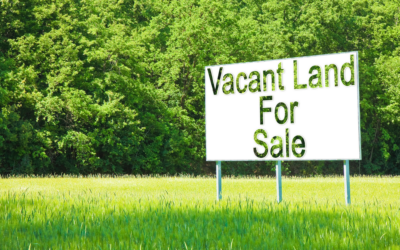Are you looking to pay off your current mortgage on your property and unlock the cash from the property that is liquid? If you are, then the best option for you is to opt for commercial cash-out refinancing. If you’re new to commercial real estate refinance concepts and are wondering about what commercial cash-out refinance means, how it works and how it might be the best option for you right now, this blog is going to be handy.
This blog covers the basics of commercial cash-out refinance and explains in brief how this form of refinancing might help you and if or not this type of refinancing is the ideal form of refinancing in a given situation. Hang in tight there.
What is Commercial Cash-out Refinancing?
Commercial cash-out refinancing occurs in situations when real estate investors decide to avail a new loan on an existing property to extract the equity of the property. Cash out refinancing happens when the investors opt for a loan that is more than the existing mortgage, pay off the existing mortgage and receive the difference amount in cash, which they generally apply for their other investing plans.
The approximate rates of interest for cash-out refinancing lies between 3% to 3.25% and requires the borrower to have at least 30% to 40% equity in the property they choose to opt for cash-out refinancing.
How does cash-out refinancing work?
A cash-out refinancing works when the investor refinances a property to extract the equity from the property. The new loan taken on the basis of the equity held in the property will generally be larger than the old loan, and the remains of the new loan amount will be available in the form of cash, which the investor might apply to invest in his or her other investing adventures or use it as a rehab budget.
Put it simply, a cash-out refinancing allows a commercial real estate investor to unlock the cash that is stuck in an illiquid investment. So, if you think your property has become illiquid and have an equity of at least 40% in your property, you can easily choose to opt for cash-out refinancing and pay off your existing mortgage, along with extra cash that you can apply for your other investment plans or just use it as a basic rehab budget. This way, you can turn your illiquid property into something that can give you a considerable amount of cash, without again, having to choose a different type of loan altogether.
To what extent can a cash-out refinancing deal finance the property?
A typical cash-out refinancing can finance up to 75% of the property’s LTV or Loan to Value ratio. This means that you will need at least 30% equity in the property that you plan to refinance cash-out. Let’s say, your property is worth $2,00,000, so you will need to have an equity of at least $60,000 in the property. (calculated as $2,00,000*0.3) also, the cash-out refinancing will cover the rest $1,40,000 for you.
Is cash-out refinancing the right option for you?
A cash-out refinancing form of refinancing a property is typically used by commercial real estate investors who hold at least 30% to 40% equity in the property value. These investors use these loans to extract the equity of the property and to thus convert their liquid property into a one that can provide them some cash.
The new loan taken as a form of cash-out refinancing will generally be higher than the existing loan. The new loan amount thus is made, will first be used to pay off the existing mortgage and the remains of the loan after, will be used in applying for a new investment strategy or to renovate an existing investment property. The difference amount will be pocketed in cash and will be applied in either of the two ways described above.
So, if you are an investor stuck with an investment property that is liquid, cash-out refinancing is your best bet. Here are some scenarios where cash-out refinancing makes the most sense. Basically, these are the three categories of investors to whom cash-out refinancing is the best option there is, as compared to any other form of commercial real estate refinancing.
Number 1 – Short term fix-and-flip investors
The first category of investors who find cash-out refinancing as the best form of refinancing are short term commercial real estate investors who purchase new properties, make repairs and renovations to the property and flip the property.
This is the category of investors who do this regularly and use cash-out refinancing to fix and flip the properties. It is their best bet because it provides them an opportunity to extract the equity from the property that became illiquid and use the extra cash that is pocketed from refinancing to use it to renovate other existing properties and flip them on a regular basis! So, if you’re a commercial real estate investor looking to fix and flip properties on a regular basis, cash-out refinancing form of refinancing could be the best option for you.
Number 2 – Long term buy-and-hold investors who wish to renovate their existing property
The second category of investors to whom the cash-out refinancing makes the most sense are long term buy-and-hold investors who want to renovate their existing property by making small but necessary additions to the building and capitalize on it in the long run. In cases where your current property is illiquid, and you are looking out for loans to finance your repairs and renovations, cash-out refinancing is your best bet as it helps you obtain a loan to pay off your old mortgage and gives you enough finance to renovate the existing property.
Number 3 – Long term buy-and-hold investors who wish to arrange for quick cash to complete a down payment for the property or buy it entirely with full payment down
The third category of investors to whom cash-out refinancing makes the best sense is again the long term buy-and-hold investors who are looking out for quick cash to complete the down payment of a property that has caught their eye or are alternatively looking to finance the entire transaction by making the full payment.
In a nutshell…
• Cash-out refinancing can be used for various purposes under different circumstances. There are no restrictions on the ways a cash-out refinancing can be applied, and it varies and depends from one investor to another.
• Most widely, cash-out refinancing is used to renovate an existing commercial real estate property to increase the overall market value of the property or in other terms, the rental income that can be derived from a specific property in the long run.
• The proceeds of the cash-out refinancing can be applied to buy the properties that are sold for all-cash where the remains of cash pocketing can be applied to fill up the gap, besides using an illiquid property to generate some real cash inflow instead of not capitalizing on the investment property in which you have an equity of at least 30% to 40%.
• It can be used to finance the short-term fix-and-flip projects where the proceeds of the new loan can be used to make attractive renovations to the property and sell it after.
• Those were the major applications of cash-out refinancing; one needs to note that under any given circumstance, it is essential for an investor to own an existing property in the first place to choose a cash-out refinancing option and additionally have an equity of at least 30% to 40% in the property. This is the fundamental requirement that needs to be fulfilled for an investor to opt for cash-out refinancing.
Here are some of the basic features of a typical cash-out refinancing loan
• The loan amount that can be made available from a standard cash-out refinancing would be 75% Loan To Value Ratio of the property.
• The interest rates on these loans would range between 3.25% to 5% generally. It might vary from one private lender to another or from one lending institution to another, but these are the general rates typically.
• The fees that will be charged by the lender will also very heavily from one lender to another, but the general costs would be 1% to 3% lender fees and the closing costs of around 2% to 5%.
• The term of such loans would generally range between 15 to 30 years, and this varies from one lender to another.
• The credit score required is anything above 640 for a private money lender or a lending institution to provide you the cash-out refinancing.
• The typical time window required for processing a cash-out refinancing deal would be anywhere between 30 to 45 days generally.
These are some of the general terms of the cash-out refinancing available generally. So, if you think cash-out commercial real estate refinance is the form of refinancing that suits your needs, move ahead and start exploring the various lenders who are providing them and choose the best deal that’ll fit your needs and expectations just right!





